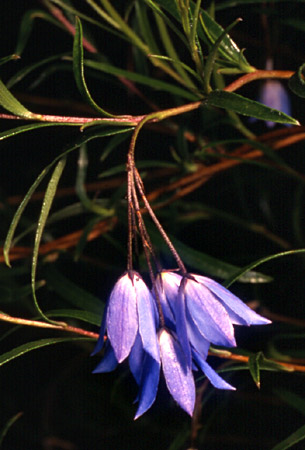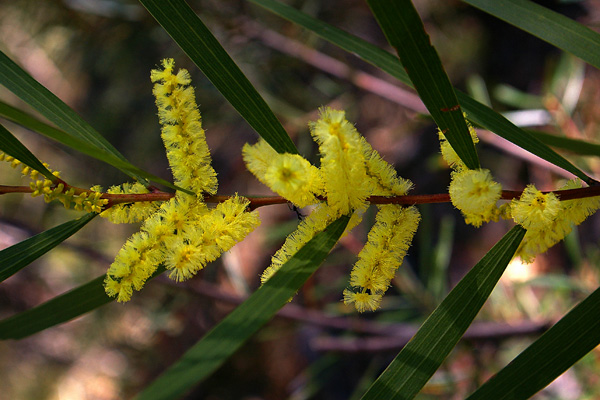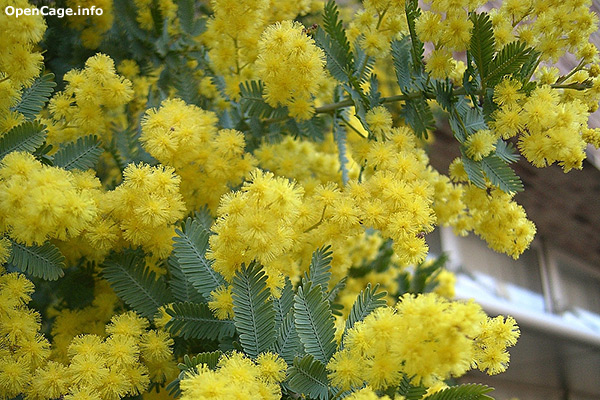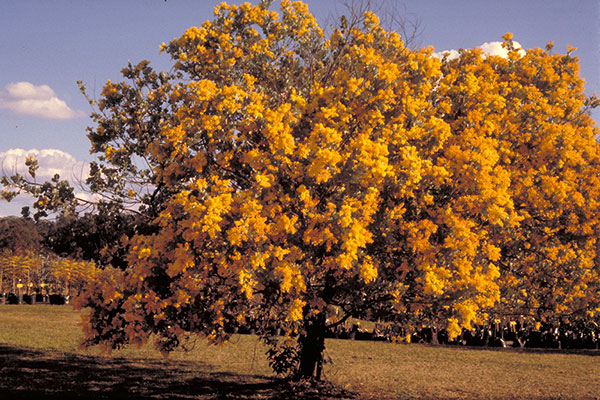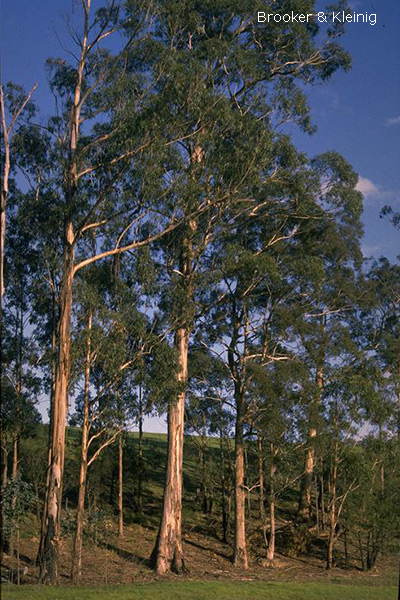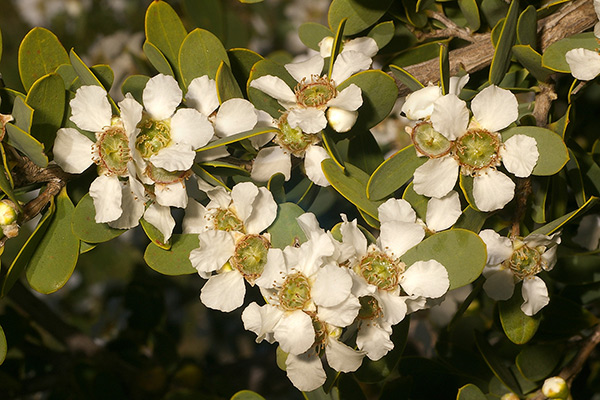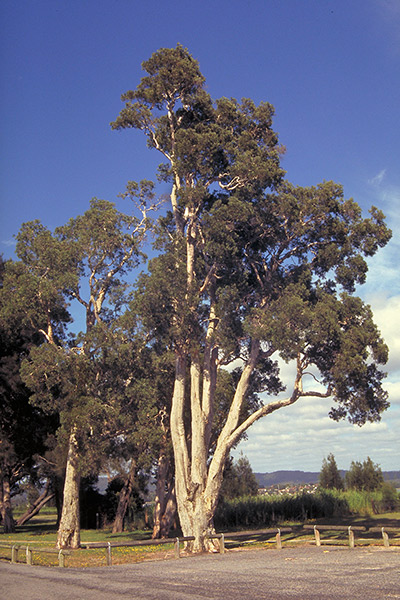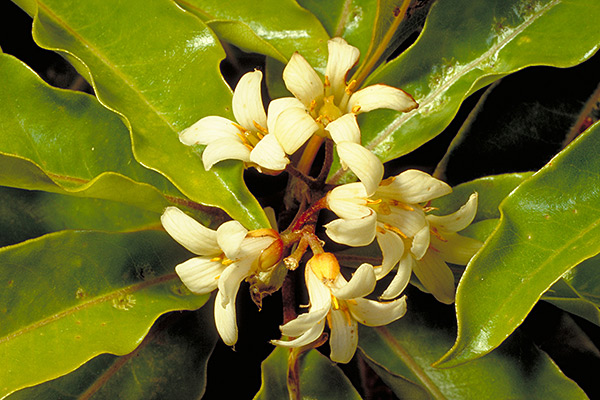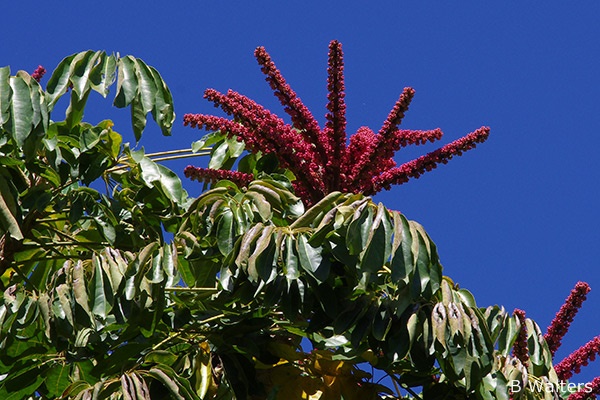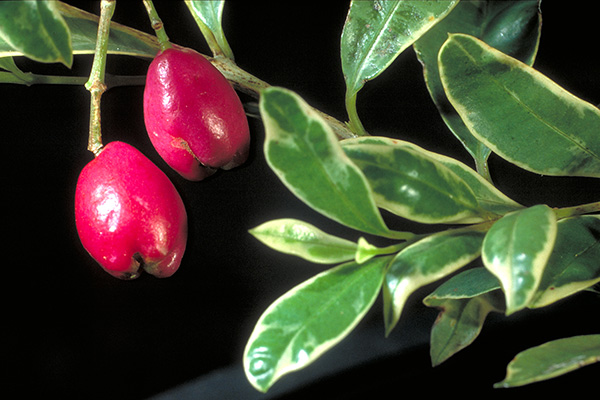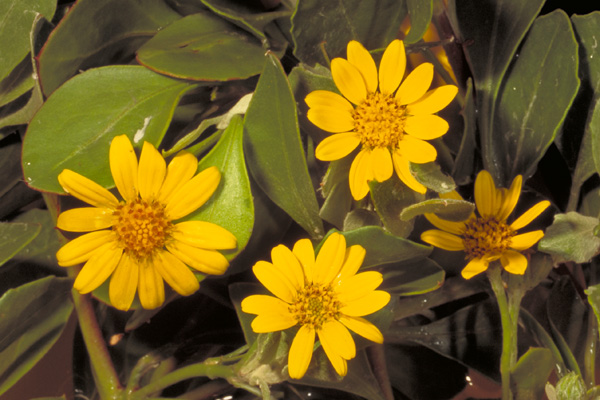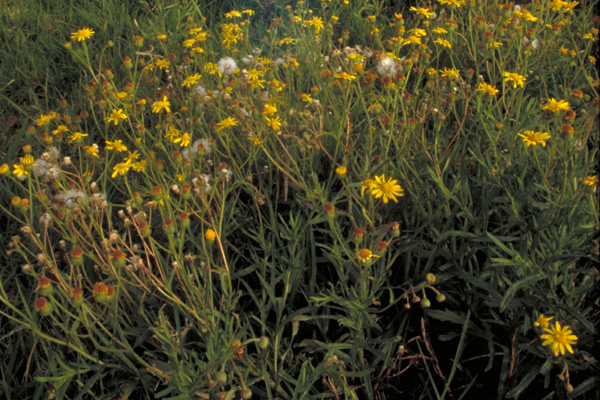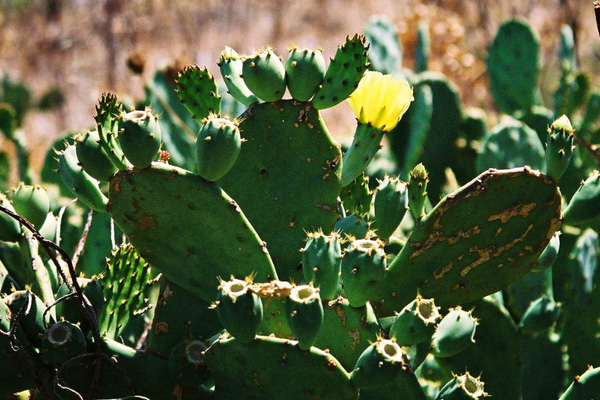Garden Design Study Group: Yarra Garden
Victoria
Pam and Jim Yarra have a new section in their garden, developed in the last five years. When the block next door was sold, they were very concerned about the retention of the significant bush corridor and the area’s biodiversity, as well as the privacy and autonomy of their own ‘bush’ garden. Having previously had no side fence at all, they negotiated to keep the fence as minimal as possible, then planted a hedge. Initial planting of Acacia boormanii was only partly successful, so most plants were replaced by Westringia ‘Wynyabbie Gem’, which have grown well and are now due for pruning. Diana Snape suggested trying a wavy hedge-line, similar to that used with various Calothamnus species in the ‘dry creek bed ‘garden at Cranbourne RBG, to reduce the formality of a hedge in their naturalistic garden.
The Yarras were relieved when Sam Cox designed the area adjacent to their boundary for the new owners, post sub-division. Because their garden is shady and dry, Pam said their plant selection is limited but any restriction is more than compensated for by having the trees and many birds, including Powerful Owls, Boobooks and Tawny Frogmouths. However there are fewer small birds than there used to be (just Musk Lorikeets and an occasional Brown Thornbill), a widespread concern nowadays.
Some-one asked whether Pam and Jim were worried about tree branches falling on their house and they said no, particularly as the trees weren’t isolated. All eucalypts are indigenous – mainly Long-leaf Box (Eucalyptus goniocalyx). The wattles are Blackwood (Acacia melanoxylon) and Black Wattle (A. mearnsii). Theirs is a habitat garden with good layering and a great diversity of plants. Bursaria spinosa attracts butterflies and Pam has noticed that blue-banded bees love the various Plectranthus species.
Their garden now has no grassed area. A long path winds through informal garden ‘beds’, with occasional side paths, mostly edged by timber.
For more information on this garden see Garden Design Study Group Newsletter 90, May 2015, p. 20.
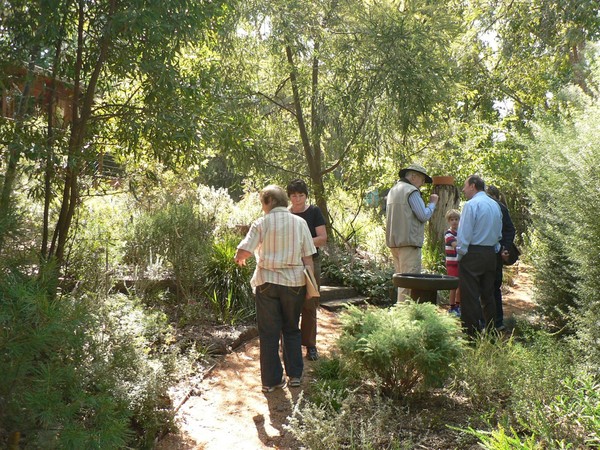
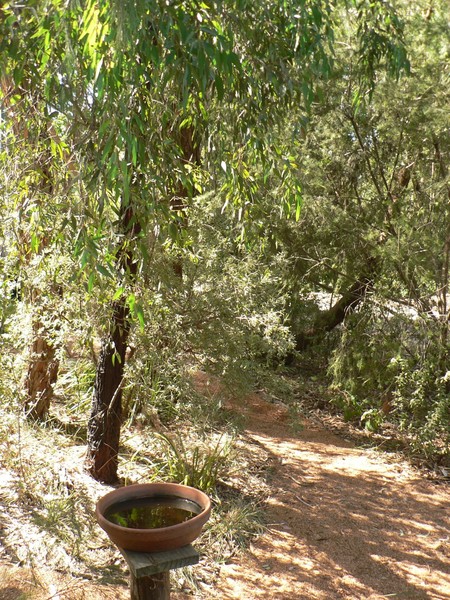
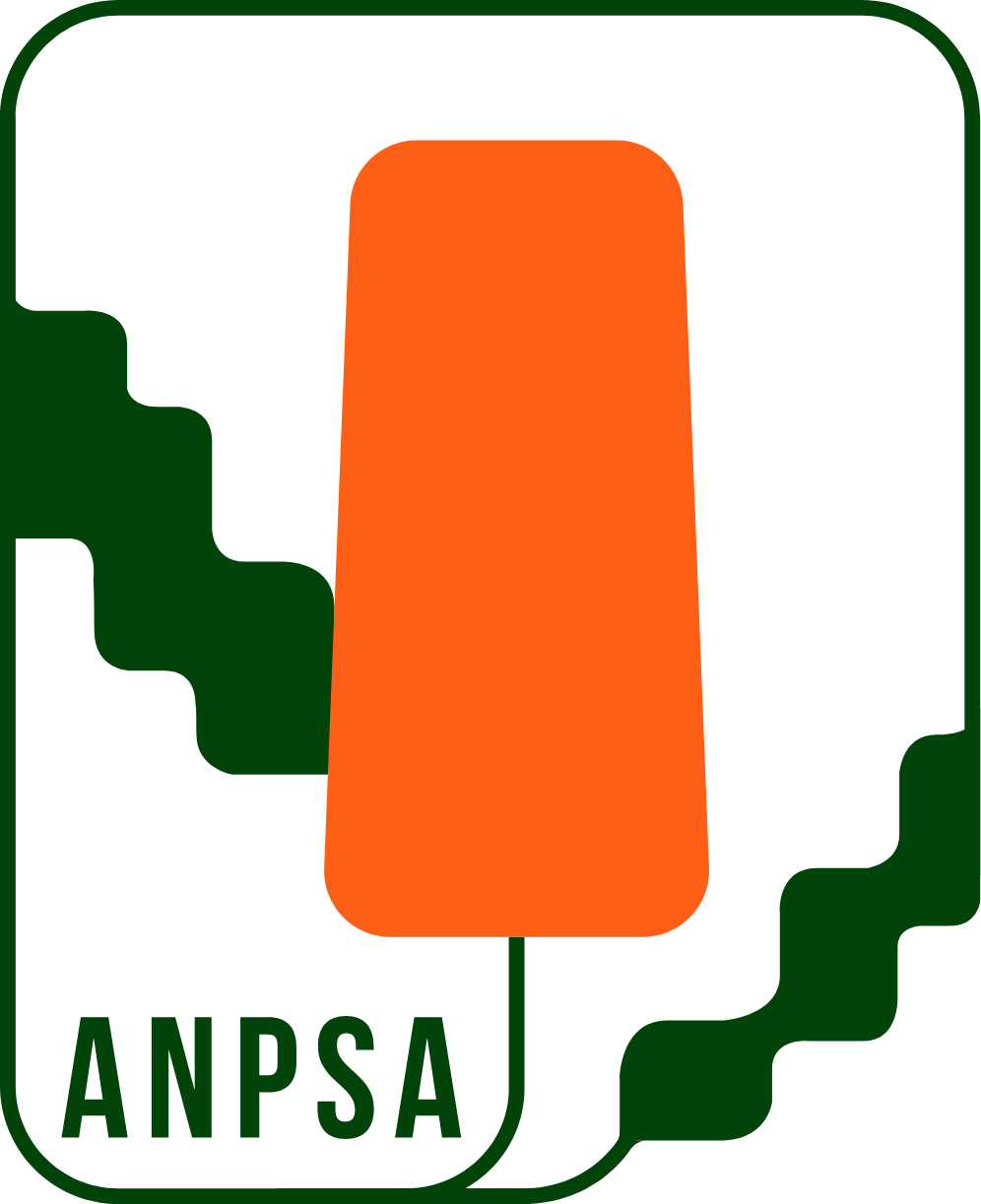 Australian Native Plants Society (Australia)
Australian Native Plants Society (Australia)